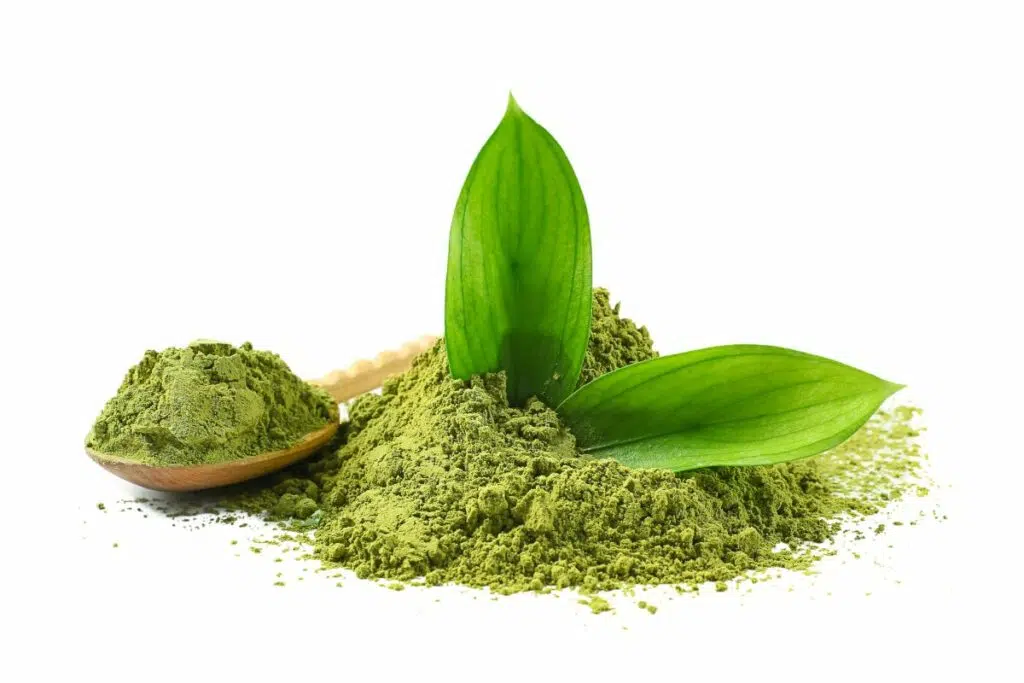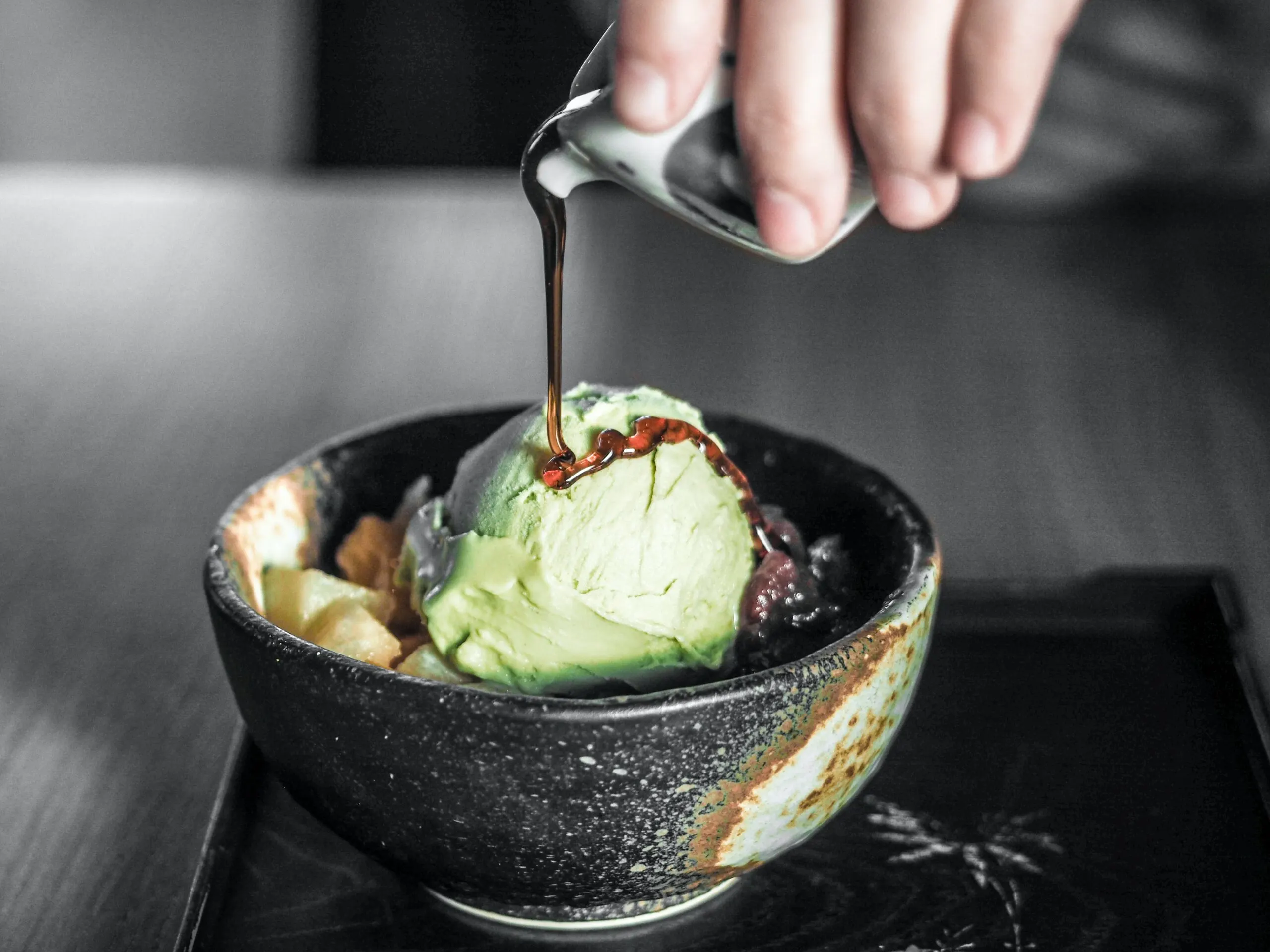Matcha is a delicious green tea that is popular in Japan but is becoming increasingly popular around the world.

It is sold in powder form and has a very complicated flavor profile, making it difficult to describe.
Even if you’ve tried matcha before, you may not know how to describe its taste!
That’s why we’ve written this article to explain what matcha tastes like.
We will look at the complex flavors of matcha and explain how they occur.
What Is Matcha?
Matcha is a form of green tea.
It comes in powdered form and is made from the green tea leaves of the Camellia Sinensis plant, the same plant that other forms of green tea originate from.
Matcha powder is especially popular in Japan where it is not only used to make drinks but also in various desserts.
What Does Matcha Taste Like?
Matcha has a very unique taste and is a mix of alluring flavors.
The taste of matcha can vary depending on the quality of the tea but all forms of matcha do have some flavors in common.
The best matcha has a very complex flavor profile.
As you drink it, you will notice mellow grassy and vegetal notes, some nutty sweetness, and a touch of bitterness.
As you finish drinking the matcha, you will get a pleasant savory aftertaste.
This aftertaste can vary greatly.
Although most matcha will give you a savory aftertaste, some may be more bittersweet, and others floral.
You may even find a type of matcha that will mix all of these flavors together!
The aftertaste of matcha lingers for longer than most aftertastes do and this is why matcha is so revered.
The easiest and quickest way to describe the taste of matcha is to use the word umami.
This is a Japanese word that has come to mean the fifth flavor profile in English as well.
The other and more commonly referred to flavors are bitter, sweet, salty, and sour.
Umami is a savory taste that is complex and delicious.
How Is Matcha Made?
There are several places where tea for matcha can be harvested and several times throughout the year when this can happen, but the very best matcha is harvested in May.

The tea leaves are grown in near darkness as this encourages the production of chlorophyll and amino acids.
The increased number of amino acids helps to give matcha that delicious umami taste.
The tea leaves are picked by hand and only the smallest and youngest leaves are chosen.
This is usually the two leaves at the tip of each shoot.
The leaves are then steamed to preserve all of the nutrients and colors within the leaves.
After being steamed, the leaves are dried in cages with heated blowers.
Once fully dry, the leaves are sorted by grade and are then destemmed and deveined. The sorted leaves are then refrigerated until it’s time for them to be ground.
When they are ground, this is completed by large granite wheels that slowly rotate.
They have to move slowly to avoid scorching the tea leaves.
This process can take over an hour to complete!
The powdered tea is then packed and shipped.
The Most Common Flavors in Matcha
Now that we’ve briefly covered the most common flavors in matcha, let’s look at some of them in more detail and explain why they occur.
Vegetal And Grassy
Many people who drink matcha compare some of the flavors they taste to those of fresh vegetables.
This flavor comes from how the matcha is prepared.
It is, after all, ground-down tea leaves so it’s no surprise that it has a little grass flavor.
Some of the vegetal flavors also come from the leaves being grown in near darkness before they are picked as well.
Sweetness
The best quality matcha will have a little sweetness to it as well.
This is usually present in the lingering aftertaste and is important as it prevents the matcha from becoming too savory and bitter.
Many people use the word “bittersweet” to describe matcha and this is a good description of how the flavors develop.
Umami
In most forms of matcha, the savory umami flavors are the ones that are the strongest.
As we stated earlier, the process of growing green tea leaves for matcha involves them growing in the shade and this produces more amino acids.
It’s this increase in amino acids and especially L-theanine that contributes to the savory taste.
How To Make Your Matcha Taste Its Best
Regardless of whether you’ve bought ceremonial-grade matcha or a lower-grade version, if you don’t prepare it right, it won’t taste as good as it could.
If you’ve tried matcha before and didn’t like it, this may be due to it being prepared incorrectly.
Temperature
Many types of tea such as black tea are brewed with boiling water.
However, this should not be the case for all teas, and matcha is one of those teas that should never be brewed in boiling water.
Instead, you should aim for water that is just under boiling and is around 176 degrees Fahrenheit.
Water
Getting the balance of powder and water right is very important.
Too much powder will make your matcha too bitter so make sure you follow the instructions on the packaging.
Don’t worry if you get this balance wrong at the beginning!
The more you make matcha the better you will get at the balance.
Mix It Correctly
Matcha doesn’t actually dissolve properly in water.
This is why it is so important that when you make matcha, you whisk it correctly.
We recommend getting a good multi-pronged bamboo whisk as this will mix it in the best way.
Final Thoughts
In this article, we took a closer look at what matcha tastes like.
We explained what matcha is and how it is made as this directly relates to the flavor profile of this delicious tea.
We also have a few hints to ensure that your matcha tastes as delicious as possible.

Equipment
- medium bowl
Ingredients
- 14 oz heavy cream
- 14 oz condensed milk
- 4 tbsp matcha powder mixed in 4 tbsp hot water not boiling
- 1 pinch salt
Instructions
- In a medium bowl, whisk together matcha powder and boiling water (boil kettle and set aside for 5 minutes). Whisk in the salt until it is completely dissolved. Pour in the condensed milk and whisk to combine.
- Whip the heavy cream in a large mixing basin for 3 minutes, or until light and frothy.
- Stir in the matcha condensed milk until well combined.
- Pour into a glass dish and smooth the surface. Place in the freezer for at least 6 hours, covered with an airtight lid. To prevent icing, drape a tea towel over the top.
